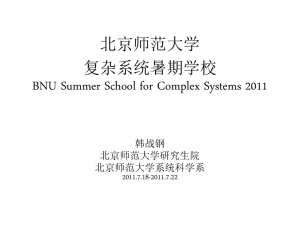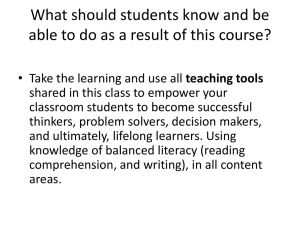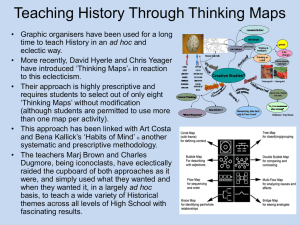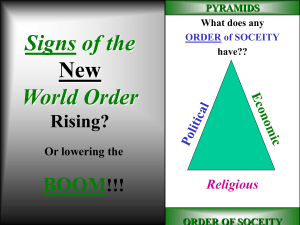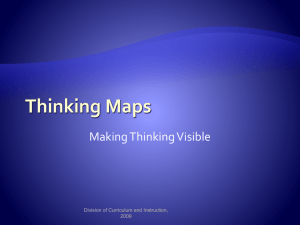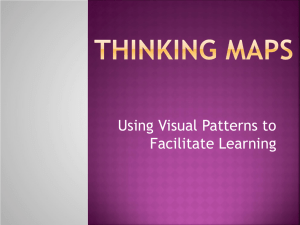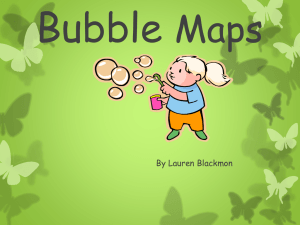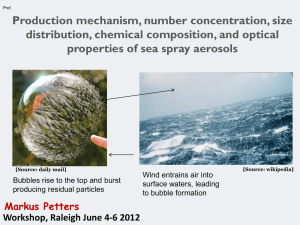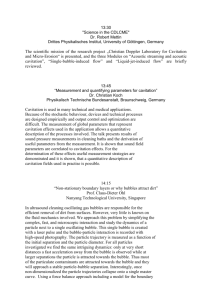BubbleMaps
advertisement
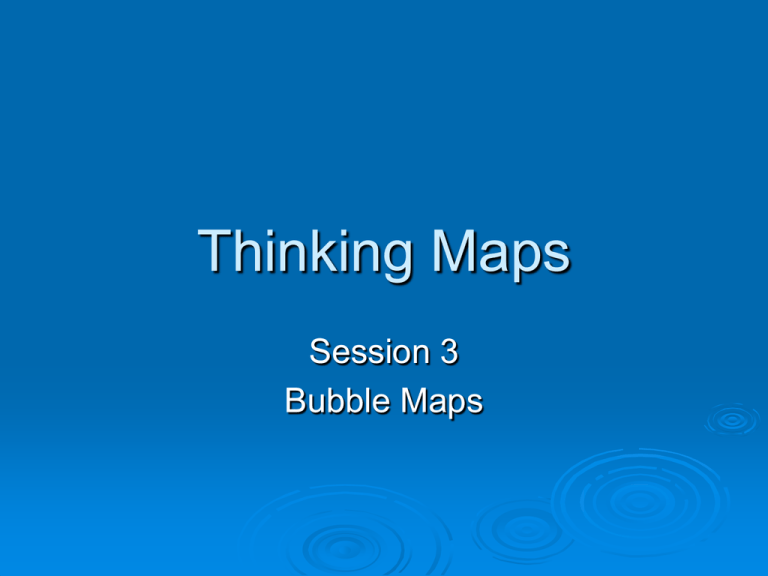
Thinking Maps Session 3 Bubble Maps Bubble Map Basics Name Bubble Map Definition Describing using adjectives/adjective phrases Thought Process Identifying sensory, logical and emotional qualities of topic or concept How to draw a bubble map? Large inside circle Word being described (topic or concept) Lines extend from inside circle to smaller outside circles Adjectives to describe the noun in the center Adjective phrases to describe the noun in the center Guiding Questions for Bubbles How would you describe this person, place, thing, idea, concept, picture, feeling, etc? What characteristics can be used to describe this noun? What are the attributes of this number or concept? What qualities are important in this concept? What are the properties of this scientific element? Key Information on Bubbles Adjectives and adjective phrases only Effective vocabulary development beyond “nice” and “good” Descriptors from five sensory qualities Descriptors using comparisons (heavy, light; tall, short) Emotional or aesthetic qualities (happy, beautiful, melancholy, dejected) Describe personal values and views on topics Adding a Frame of Reference Page 20 Classroom Applications Listen to the story of Tacky: The Penguin Each table will create a bubble map with Tacky in the center bubble Frame of reference for point of view One = Hunter’s POV Two = Tacky’s POV Three = Companions’ POV Before Four = Companions’ POV After Combine all four into one bubble map Page 11 4TH Grade Special Education Class Middle School Social Studies Page 11 High School English Science Bubbles for ELLs Begin with sensory questions and single adjectives Picture of object in center Word cards to choose accurate adjectives Create sentences from bubble maps using is/are Create bubble maps from sentences in a passage Bubbles for Inference Create riddles Leave center blank Uncover one adj/phrase at a time Students list what it can/cannot be Infer the correct item for center May create center item from description Use at all levels with concepts after skill developed with concrete objects Bubbles to Extend and Select Precise Vocabulary Picture in center (Santa) Three bubbles Three choices for each bubble with pictures for each Bony cheeks Sallow cheeks Rosy cheeks Valuing and Evaluating Display map and allow students to put as many adj/phrases as possible Create second map with only 3 bubbles Discuss to select 3 most accurate and reasons why Put in those chosen and justification in frame next to each Decision Making Bubble map of ideal presidential candidate Bubble map of each candidate comparing attributes against the ideal Bubble with a line through means candidate does not have that attribute Evidence or justification outside in frame for each bubble Assists in rationale, fact-based decisions Literary Extensions/Character Attributes Name of character in story in center Surround with adjectives to choose from Some accurate Some inaccurate Students select which ones go on the map Must justify those chosen and those not chosen with evidence and reasons Fact and Opinion Draw two bubble maps Place frame of reference on each Label one fact Label one opinion Select person from history, literary figure, animal, science chemical, etc. Circle map brainstorm adj/phrases Place on correct bubble map Assignment for Practice Talk at your table about some ideas for using a bubble map in your upcoming lessons. (You could use a circle map to gather ideas.) Within the next month, use the map and collect student samples Work to show higher order thinking, justification, and/or decision-making

